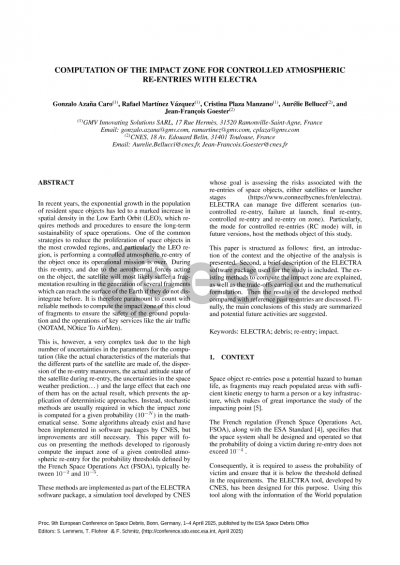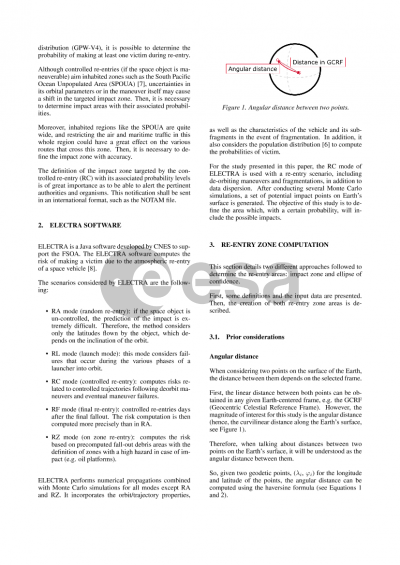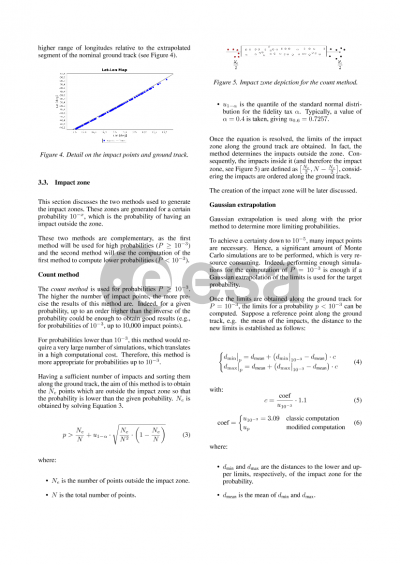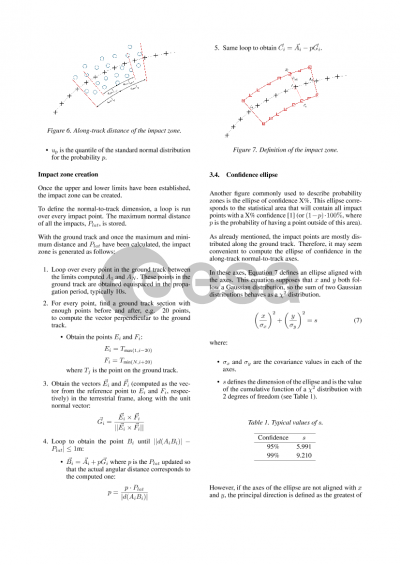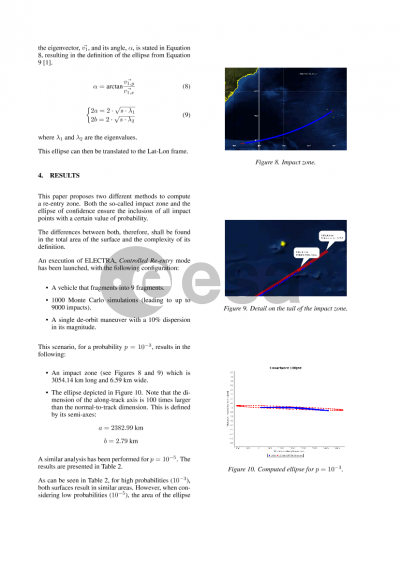Document details
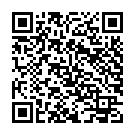
Abstract
During the last years there has been an exponential increase in the number of resident space objects with the associated augmentation in the spatial density in Low Earth Orbit (LEO) which requires methods and procedures to ensure the sustainability of space operations. One of the common strategies to reduce the proliferation of space objects in the most crowded regions, and in particular the LEO region, is performing a controlled atmospheric re-entry of the object once its operational mission is over. During this re-entry, and due to the aerothermal forces acting on the object, the satellite will most likely suffer a fragmentation resulting in the generation of several fragments which can reach the surface of the Earth if they do not disintegrate before. It is therefore paramount to count with reliable methods to compute the impact zone of this cloud of fragments to ensure the safety of the ground population and the operations of key services like the air traffic (NOTAM, NOtice To AirMen).
This is however a very complex task due to the high number of uncertainties in the parameters for the computation (like the actual characteristics of the materials that the different parts of the satellite are made of, the dispersion of the re-entry manoeuvres, the actual attitude state of the satellite during re-entry, the uncertainties in the space weather prediction…) and the large effect that each one of them has on the actual result, which prevents the application of deterministic approaches. Instead, stochastic methods are usually required in which the impact zone is computed for a given probability (10-N) in the mathematical sense. Some algorithms already exist and have been implemented in software packages by CNES, but they remain approximative and are therefore not reliable enough. This paper will focus on presenting the methods developed to rigorously compute the impact zone of a given controlled atmospheric re-entry for the probability thresholds defined by the French Space Operations Law (LOS), typically between 10-2 and 10-5.
These methods are implemented as part of the ELECTRA software package, a simulation tool developed by CNES whose goal is assessing the risks associated with the re-entries of space objects, either satellites or launcher stages (https://www.connectbycnes.fr/en/electra). ELECTRA can manage six different scenarios (uncontrolled re-entry, failure at launch, final re-entry, guided re-entry…) and particularly has a mode for controlled re-entries (RC mode) which hosts the methods object of this study.
This paper is structured as follows: first, an introduction of the context and the objective of the analysis is presented. Second, a brief description of the ELECTRA package used for the study is included. Third, the literature review on the different existing methods to compute the impact zone is explained, as well as the trade-offs carried out and the mathematical formulation of the method that has been selected. Then the results of the developed method when compared with reference past re-entries are discussed. Finally, the conclusions and possible future work are listed.
Preview
